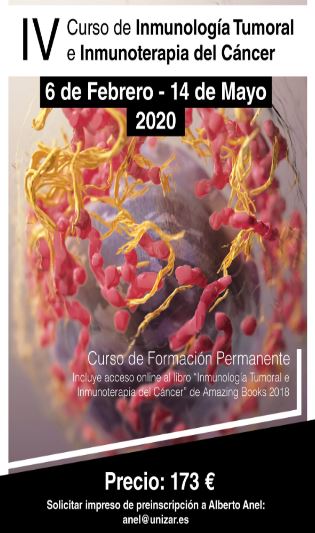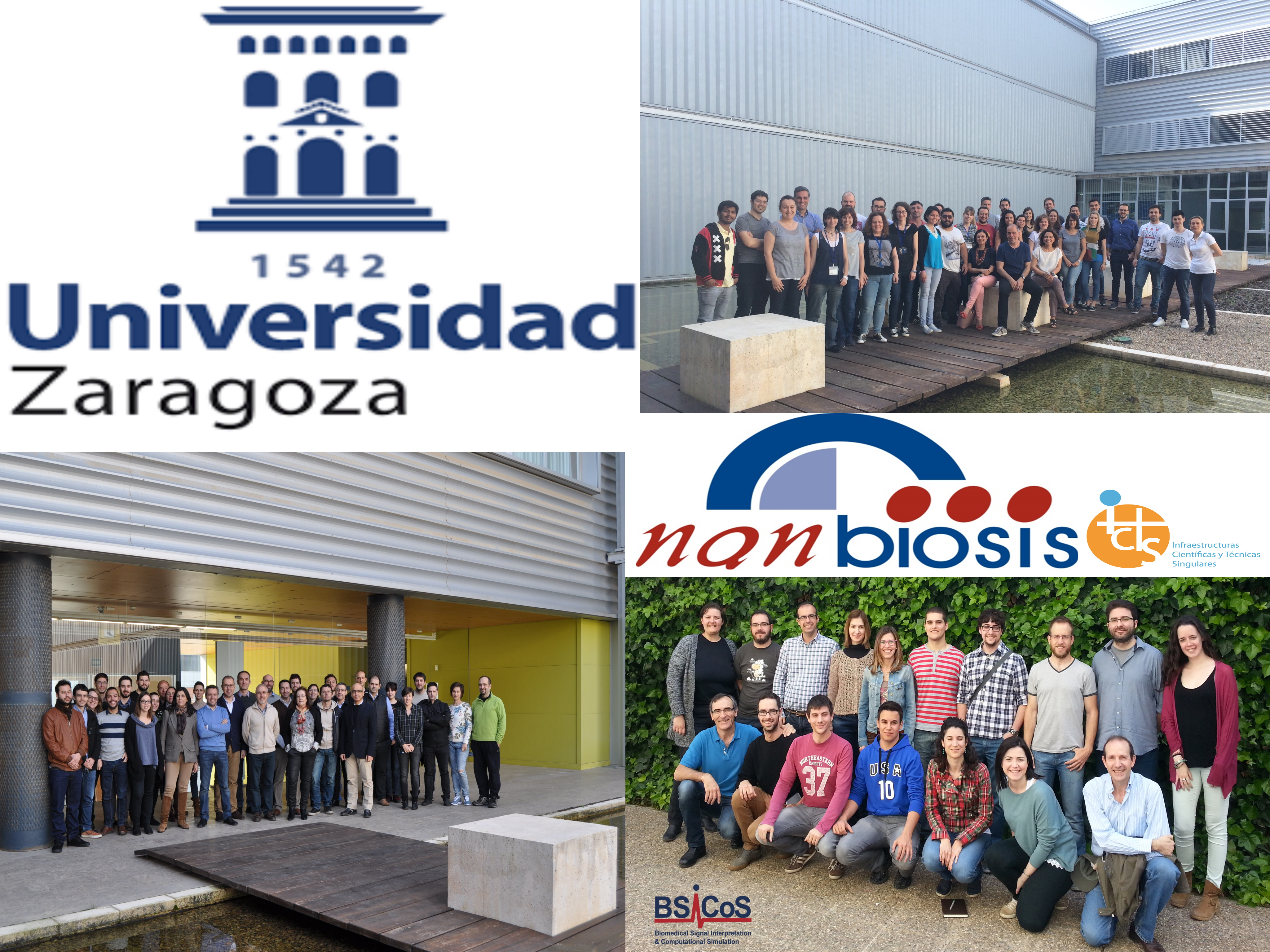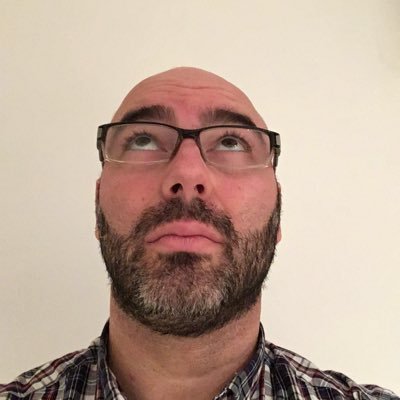Tumor Immunology and Cancer Immunotherapy Course
The IV course on Tumor Immunology and Cancer Immunotherapy will start on 6th Feb, 2020.
On April 2 at 7:00 pm Iñaki Ochoa will teach about “Basic research in cancer immunotherapy. Use of microfluidics in the study of cancer immunotherapy“.
Ignacio Ochoa is a Professor of the Department of Human Anatomy and Histology of the University of Zaragoza and researcher of the
AMB – Applied Mechanics and Bioengineering group and NANBIOSIS U13 Tissue & Scaffold Characterization Unit from CIBER-BBN and I3A-Zaragoza University
Classes will be held on Thursday, from 4:00 p.m. to 8:00 p.m., in the CIBA Lorente de Nó Assembly Hall (with an exception that is detailed in the program) starting on 6th Feb, 2020.
It is an ongoing training course. Price: 173 €. Includes Online Access to the book “Tumor Immunology and Cancer Immunotherapy” by Amazing Books 2018
Program and registration: https://eventos.unizar.es/44697/programme/curso-de-inmunologia-tumoral-e-inmunoterapia-del-cancer.html
Request pre-registration form Alberto Anel anel@unizar.es


















